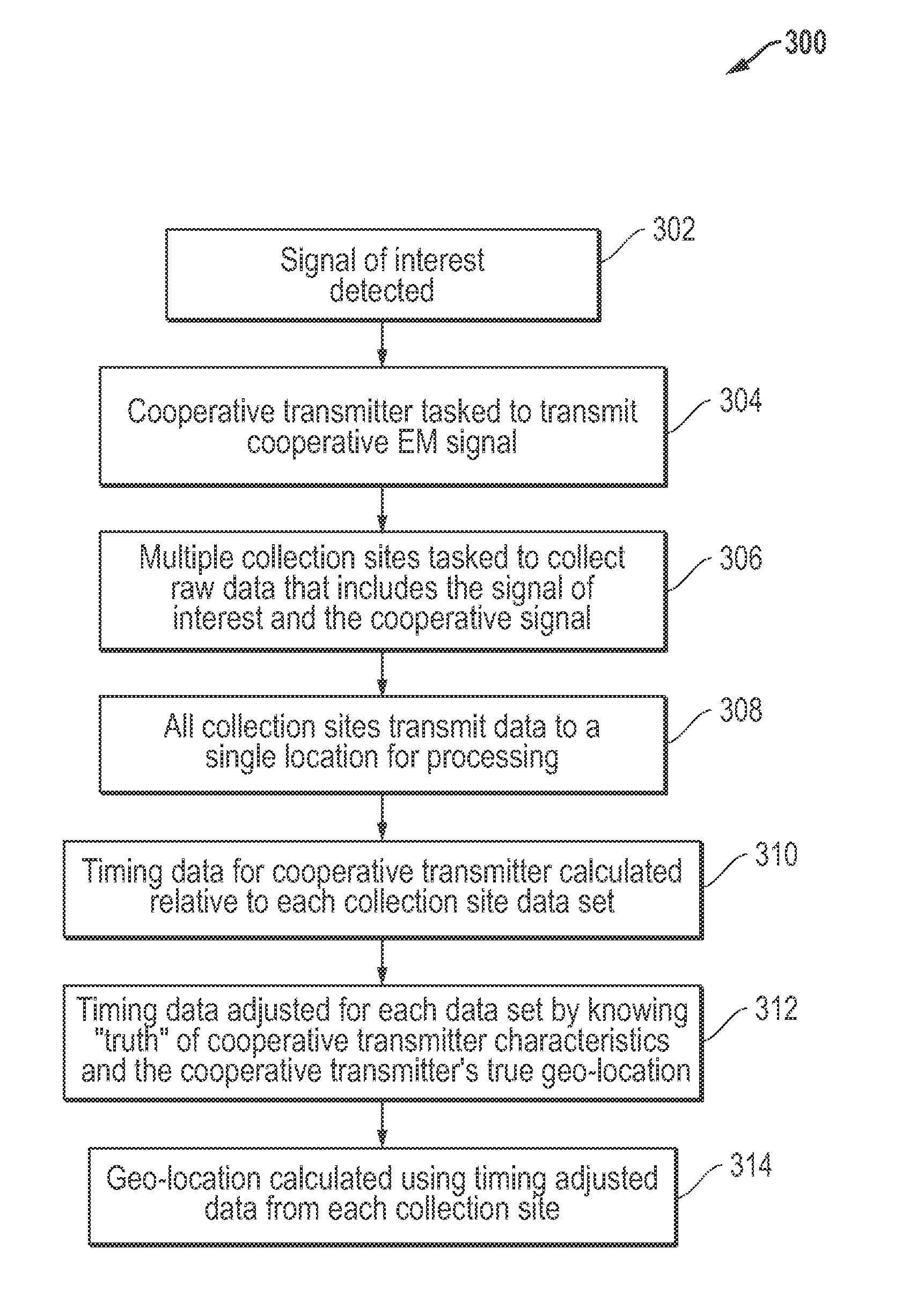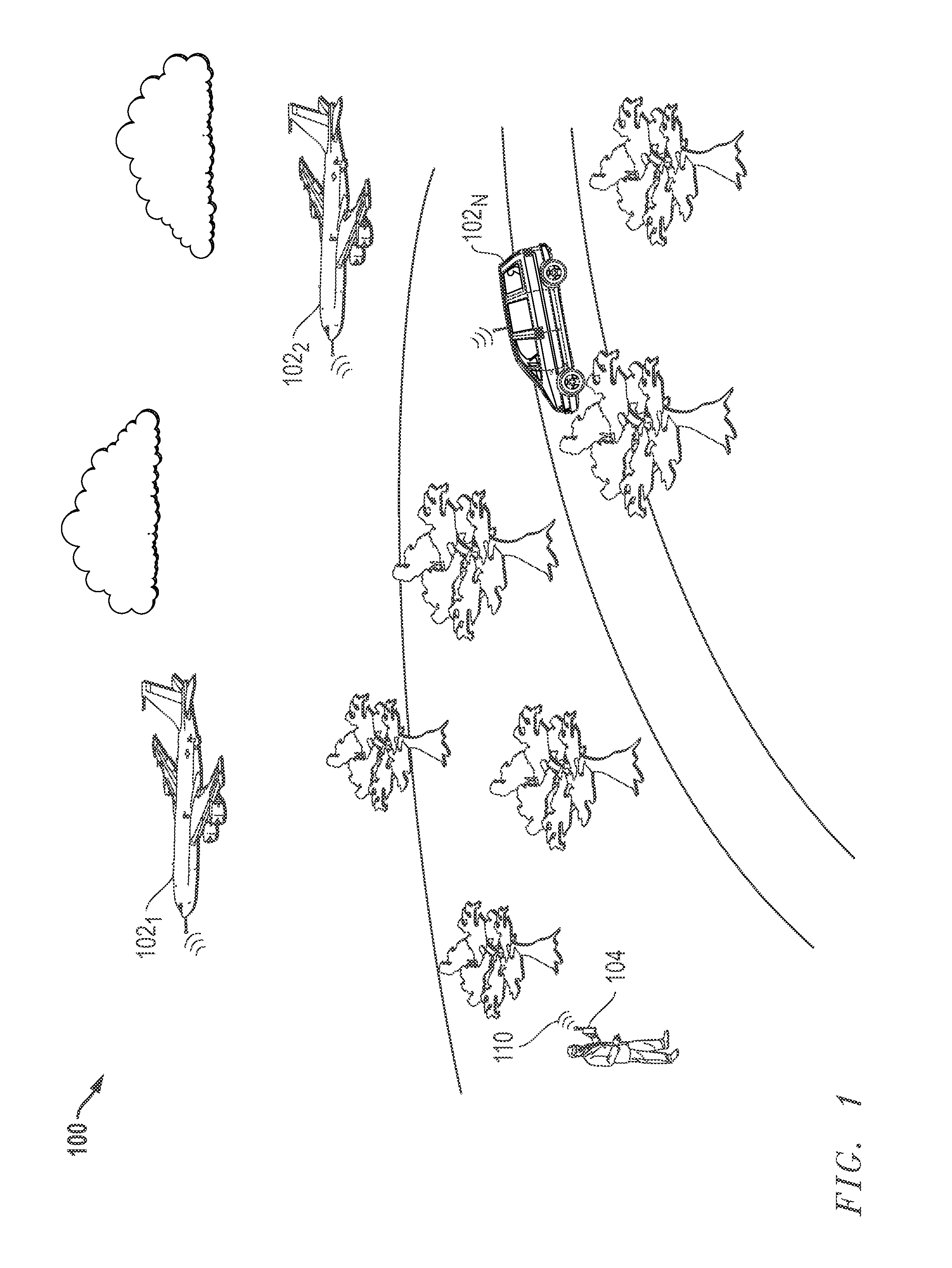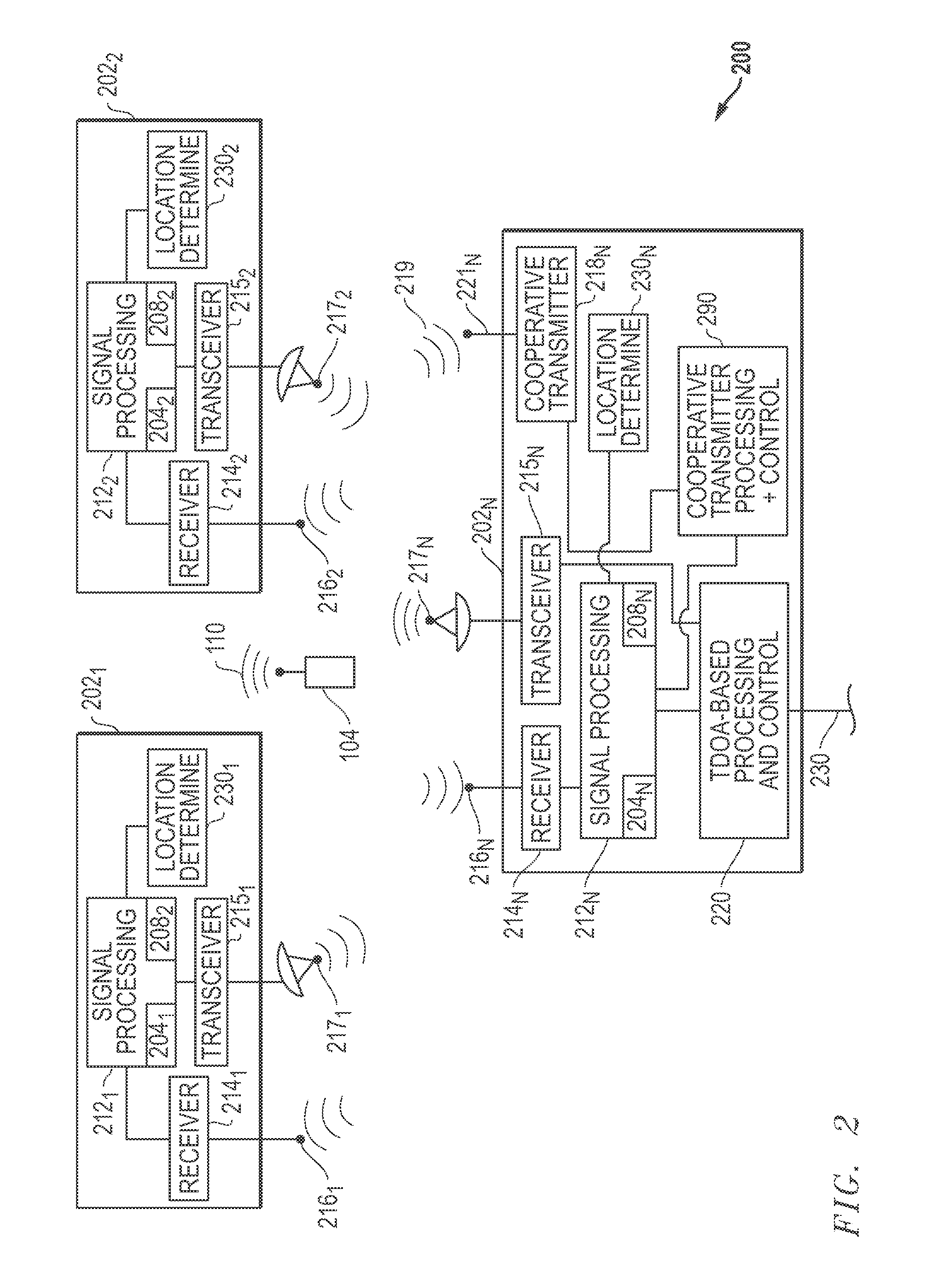Cooperative systems and methods for TDOA-based emitter location
a technology of electromagnetic radiation and co-operation, applied in the direction of direction finders, radio wave direction/deviation determination systems, instruments, etc., to achieve the effect of accurate resolution of signal arrival timing relationships
- Summary
- Abstract
- Description
- Claims
- Application Information
AI Technical Summary
Benefits of technology
Problems solved by technology
Method used
Image
Examples
Embodiment Construction
[0030]FIG. 1 illustrates one exemplary embodiment of an EM emissions environment 100 (in this case a radio communication environment) in which an emitter in the form of transmitter 104 at an unknown location is transmitting a target EM signal of interest 110 (TXunknown), e.g., in this case a radio frequency (RF) signal. In the illustrated embodiment, the illustrated emitter 104 is a ground-based mobile emitter (e.g., cell phone, push to talk radio, etc.) carried by a human being that is stationary and emitting from a fixed location. However, it will be understood that the disclosed systems and methods may be practiced in radio communication environments in which any type, number and / or combination of different types of emitters are transmitting on a one or more frequencies including, but are not limited to, base stations of a cellular telephone network, cell phone devices, weather broadcast stations, radar signal sources, microwave sources, etc. Furthermore, besides being hand carri...
PUM
 Login to View More
Login to View More Abstract
Description
Claims
Application Information
 Login to View More
Login to View More - R&D
- Intellectual Property
- Life Sciences
- Materials
- Tech Scout
- Unparalleled Data Quality
- Higher Quality Content
- 60% Fewer Hallucinations
Browse by: Latest US Patents, China's latest patents, Technical Efficacy Thesaurus, Application Domain, Technology Topic, Popular Technical Reports.
© 2025 PatSnap. All rights reserved.Legal|Privacy policy|Modern Slavery Act Transparency Statement|Sitemap|About US| Contact US: help@patsnap.com



